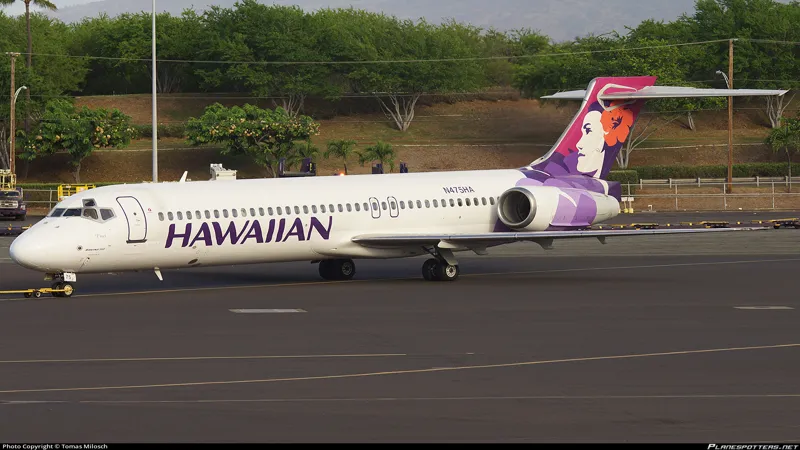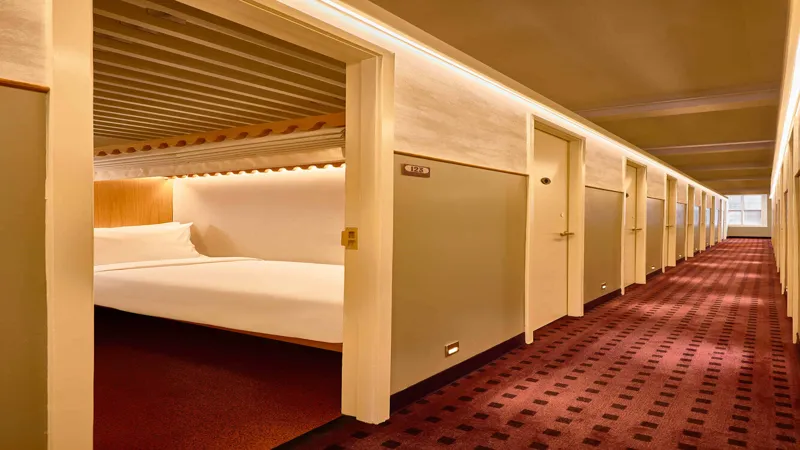As travelers set their sights on the picturesque shores of Hawaii, the journey to paradise has transformed significantly. Gone are the days when a long flight meant merely enduring cramped seating; today, the stakes are higher with airlines tightening their grip on comfort and premium seating. With strict enforcement of upgraded seating policies and a growing emphasis on ancillary revenue, passengers are left grappling with the realities of air travel that prioritize profit over ease. This shift raises important questions about fairness and accessibility, prompting travelers to rethink their strategies and expectations when booking flights to the Aloha State.
| Airline | Policy Changes | Passenger Reactions | Implications for Travelers | Future Considerations |
|---|---|---|---|---|
| Hawaiian Airlines | Strict enforcement of ‘Extra Comfort’ seating; tray tables lowered in unoccupied premium seats. | Mixed reactions; some support fairness, others feel comfort should be included in the ticket price. | Travelers need to plan ahead for comfort; options for upgrades depend on ticket purchase. | Transparency in policies is crucial; airlines should clarify upgrade options and costs upfront. |
| Delta Airlines | Emphasis on premium offerings; projected to be most profitable in 2025. | Some passengers feel it’s unfair to pay more for basic comfort; others agree with paid options. | Travelers must be aware of potential costs for extra legroom during booking. | Should airlines prioritize passenger satisfaction over profit margins? |
| United Airlines | Strict control over ‘Economy Plus’ section; aggressive prevention of unpaid upgrades. | Concerns about reduced comfort in economy; dissatisfaction with cramped seating. | Potential need to purchase premium seats; flexibility with travel dates may help. | Balancing profitability and passenger experience is essential for future travel. |
| General Airline Trends | Airlines are tightening space and focusing on non-ticket revenue sources. | Criticism of airlines prioritizing revenue over passenger satisfaction. | Families and budget travelers face challenges due to high premium fees. | Need for consistent policy enforcement to reduce perceived inequalities. |
The Changing Landscape of Airline Seating Policies
Airlines have recently tightened their policies regarding seating, especially for flights to popular destinations like Hawaii. With the rising travel demand, airlines are focusing more on premium offerings, making it harder for travelers to find comfortable seating without paying extra. Gone are the days when passengers could hope for an open seat next to them for more room. Now, travelers must consider their seating options carefully when booking their flights.
This shift in seating policies has significant implications for passengers. For families and individuals with specific needs, like taller travelers, the lack of accessible options can be frustrating. As airlines enforce stricter rules on premium seating, it becomes essential for travelers to understand these changes and plan accordingly. Whether it’s purchasing extra legroom at the time of booking or being flexible with travel dates, being informed is key to a more comfortable journey.
Passenger Reactions to Stricter Policies
The response to the new seating policies among travelers has been mixed. Some passengers believe that it is fair for airlines to enforce paid seating, arguing that those who pay for extra comfort should receive it. Others feel that these policies strip away necessary comfort from an already cramped flying experience, leading to feelings of frustration and unfairness. Comments from travelers reflect a range of opinions on this contentious issue.
For example, Linda expressed her displeasure, stating that comfort should be included in the ticket price, while others like Andy supported the premium offerings. This debate highlights the emotional impact of airline policies on everyday travelers. As airlines continue to prioritize their profits, many passengers are left feeling squeezed, both physically and financially, as they navigate their flying experiences.
Complex Challenges for Airlines and Travelers alike
As airlines enforce stricter policies for premium seating, both travelers and the airlines face complex challenges. For many passengers, especially those with physical limitations, the need for extra space is essential. However, this often comes at an additional cost. Travelers like Bob, who are taller, find it challenging to cope with standard seating, raising questions about fairness in charging for basic comfort.
Furthermore, the emotional strain of these policies can affect customer satisfaction. Families and budget-conscious travelers are particularly impacted, as the divide between economy and premium seating grows. The comment from Sims R. about the focus on revenue at the expense of passenger comfort points to a broader issue that airlines must address to maintain a loyal customer base and ensure a positive flying experience.
Navigating Airline Policies Effectively
Understanding the evolving airline policies is crucial for travelers planning trips to Hawaii and beyond. With the tightening of premium seating options, it’s essential for passengers to be proactive when booking flights. Options like purchasing premium seats at the time of booking or adjusting travel dates for better pricing can make a significant difference in comfort during the journey.
Additionally, being informed about each airline’s specific policies can help avoid frustration. For instance, Hawaiian Airlines has taken steps to enforce its premium seating more strictly, which might not be the case with other carriers. Travelers should communicate their needs and preferences clearly when booking to ensure they find the best possible seating arrangement for their trip.
The Economic Impact of Airline Revenue Strategies
The trend of airlines tightening their grip on seating policies reflects a broader economic strategy within the aviation industry. By increasing revenue from non-ticket sources, such as baggage fees and premium seating, airlines are attempting to improve their profitability amid rising operational costs. This shift impacts not only travelers but also the overall travel experience, as comfort diminishes in cramped economy sections.
As the focus on revenue grows, families and budget travelers face additional hurdles when planning their trips. The divide between economy and premium seating can create further challenges for those who cannot afford to pay extra for comfort. The industry’s focus on maximizing profit raises questions about how airlines can balance their financial goals with the satisfaction of their passengers.
The Future of Air Travel: Finding Balance
As the airline industry continues to evolve, finding a balance between profitability and passenger satisfaction will be critical. Transparency in policies and consistent enforcement can help build trust between airlines and travelers. Many passengers agree that clear communication about upgrade options and costs is essential for a positive travel experience.
Moreover, as travelers share their feedback and experiences, airlines may need to reconsider their strategies. Ensuring that all passengers feel valued and comfortable should remain a priority, especially as the industry faces ongoing challenges. Ultimately, the future of air travel will depend on how well airlines can adapt to the needs of their customers while maintaining their financial health.
Frequently Asked Questions
Why are airlines enforcing stricter seating policies for flights to Hawaii?
Airlines are tightening seating policies to boost profits from premium offerings, as travel demand increases and they seek additional income sources.
What is the impact of the ‘Extra Comfort’ seating policy by Hawaiian Airlines?
Hawaiian Airlines enforces its ‘Extra Comfort’ policy by blocking access to premium seats for non-paying customers, limiting options for additional comfort.
How do travelers feel about the changes in seating policies?
Reactions are mixed; some support the fairness of paid seating, while others feel airlines are removing essential comfort from economy travel.
What should passengers consider when booking flights to Hawaii?
Travelers should plan their seating options upfront, either by purchasing premium seats at booking or being flexible with travel dates for better prices.
How can taller passengers navigate the new seating restrictions?
Taller passengers, like Bob, may need to consider purchasing extra seats or look for airlines with more generous legroom options.
What changes are airlines making beyond Hawaii travel?
Globally, airlines are focusing on revenue from non-ticket sources, implementing stricter upgrades, and charging for additional services like baggage and meals.
What can travelers do to ensure a comfortable flying experience?
Travelers should stay informed about airline policies, plan ahead for seat upgrades, and communicate their needs to avoid discomfort during flights.
Summary
Traveling to Hawaii is becoming more challenging as airlines enforce strict premium seating policies, leading to added costs for comfort. Airlines like Delta and Hawaiian Airlines are prioritizing profits by limiting access to extra legroom and blocking off premium seats for paying customers. Passengers have mixed feelings; some support the fairness of these policies, while others, like Linda, feel that basic comfort should be included in ticket prices. As airlines tighten their grip on seating, travelers need to adjust their booking strategies to secure extra space, with transparency about costs being essential for customer satisfaction.



